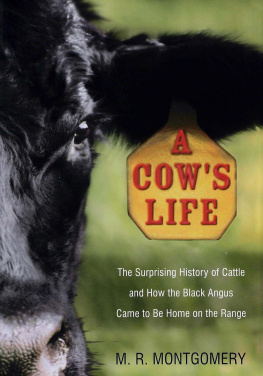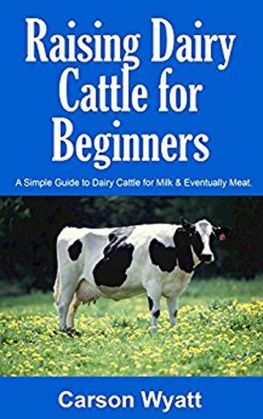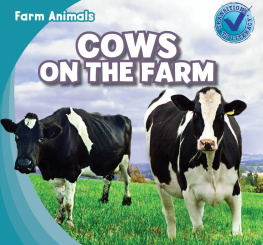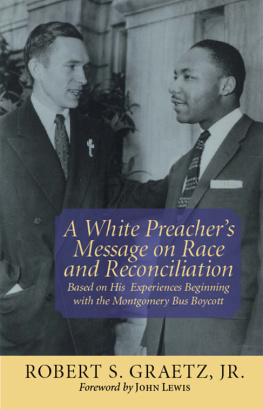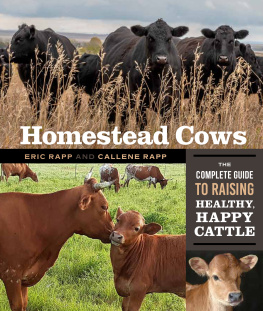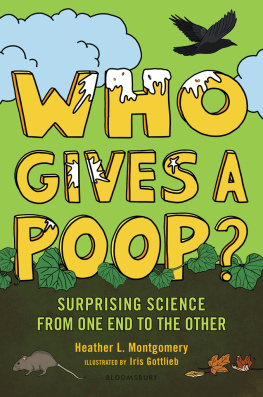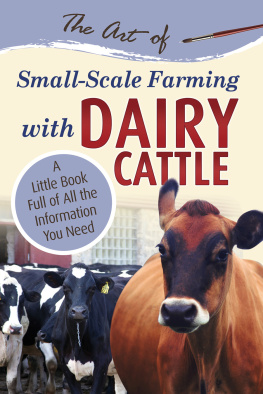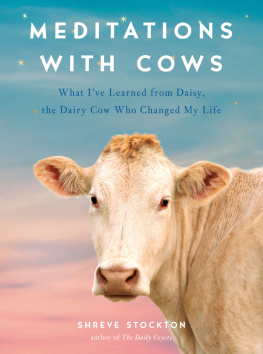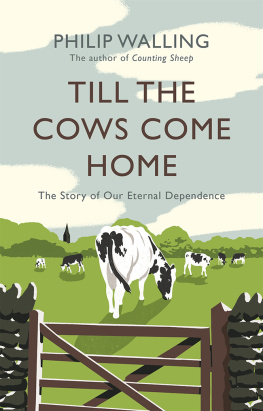A COW'S LIFE

The Surprising History of Cattle
and How the Black Angus Came
to Be Home on the Range
M. R. Montgomery

Text copyright 2004 by M. R. Montgomery
Illustrations copyright 2004 by Gerald Foster
All rights reserved. No part of this book may be reproduced or transmitted in any form or by any means, electronic or mechanical, including photocopying, recording, or by any information storage and retrieval system, without permission in writing from the Publisher.
First published in the United States of America in 2004 by
Walker Publishing Company, Inc.
Published simultaneously in Canada by Fitzhenry and Whiteside, Markham, Ontario L3R 4T8
For information about permission to reproduce selections from
this book, write to Permissions, Walker & Company,
104 Fifth Avenue, New York, New York 10011.
Art is courtesy of Mondadori Electa Spa, Milano.
Library of Congress Cataloging-in-Publication Data
Montgomery, M. R.
A cow's life : the surprising history of cattle and how the Black Angus came to be home on the range / M. R. Montgomery,
p. cm.
Includes bibliographical references.
eISBN 978-0-802-71811-2
1. Aberdeen-Angus cattleUnited StatesHistory.
2. Aberdeen-Angus cattleCanadaHistory. I. Title.
SF199.A14M66 2004
636.2'23dc22
2004043073
Book design by M. J. DiMassi
Visit Walker & Company's Web site at www.walkerbooks.com
Printed in the United States of America
2 4 6 8 10 9 7 5 3 1
To Scots and Scotch cows,
indomitable at home and abroad.
"Herdsmen must have a taste and a strong
liking to cattlethey must be their hobby."
WILLIAM M'COMBIE OF TILLYFOUR
I N the span of modern human history, a celebrity cow (in the generic sense of a member of the cattle family) is a rare item. Mrs. O'Leary's cow, blamed for the great Chicago, Illinois, fire of October 9, 1871, qualified for a time. Of bulls, only two come to mind, one real, one fictional. They were both famous for being nonfighting Spanish bulls, the real Civilon of Barcelona fame, and for the elementary school set, the marvelously bee-stung Ferdinand the Bull. The Texas longhorn might qualify for celebrity, or notoriety, but only because of western movies and for being the mascot of the University of Texas football team. Both the oaters and the Texas football team are in decline as of this writing. The only other candidate, and it is a winner, is the Aberdeen-Angus breed of cattle.
Across the breadth of North America, only the Aberdeen-Angus have produced a beefsteak that has truly achieved celebrity. Not only is Certified Angus Beef advertised on the restaurant menu and the supermarket shelf, a picture of an Aberdeen-Angus steera silhouette of a solid black hornless animaladorns menus and package labels in more than five thousand markets and on menus of over fifty-five hundred restaurants.
The simple statistics of this elite piece of meat are boggling. Chosen from just the top 18 percent of all Angus cattle (Americans shortened the hyphenated name for marketing purposes), the certified animals produced in the last year something on the order of 225 million servings of the most desirable cuts of steak, from the gargantuan porterhouse to the relatively effete tenderloin. The rest of these superior carcasses went into a billion and a half servings of labeled roasts and joints and even certified hot dogs. Just to give an idea of how this one particular breed of cow has come to be synonymous with quality, it outsells its only brand-named breed competitor, Certified Hereford Beef, by twenty-five to one.
The success of Angus is not just clever marketing. Smoke and mirrors are of no use with a product that requires only a knife and a fork to easily and rewardingly compare it to a run-of-the-ranch piece of beef. Aberdeen-Angus is remarkable for quality in great quantity and for consistency over centuries. It is one of the few items of food, if not the only one, that can be mass-produced in the twenty-first century and taste as good as it ever did. In an age when gourmets search out tender wild greens and heirloom tomatoes and free-range chickens and artisanal bread and other relics of a less-industrialized era of foodstuffs, there is no need to look for an heirloom steak. Today's Aberdeen-Angus sirloin strip tastes just as good as the famed one eaten by Queen Victoria in 1866. The only difference is that Victoria got hers for free, after having been introduced to the steer by name, before dining upon him.
On the cave wall at Lascaux, France, ancient man painted the animals he hunted, including the now-extinct wild animal that was the source of all of the cattle living today. As varied as our cattle arefrom the alert Aberdeen-Angus to the oblivious black-and-white Holstein dairy cow, from huge draft oxen to diminutive Alderney dairy cowsnot one remotely resembles that ancestor captured for eternity in the darkness of Lascaux. The bull of the cave paintings survived into the sixteenth century and is the same animal that Julius Caesar described as "a little smaller than an elephant," an animal so different that it is a species separate from the ones we see today. The beast at Lascaux is the largest animal portrayed there, a full 18 feet (5.5 meters) long. The size was an exaggeration, but the artist was conveying the awesome fearfulness of the animal. All the hundreds of breeds of modern cattle have evolved within the last several thousand years, long after Lascaux was abandoned. In Charles Darwin's elegantly phrased book title, they are each a result of The Variation of Animals and Plants under Domestication. The horse, it should be noted, unlike the cow, was found in nature of a size and temperament to be ridden or driven and has not changed enough in captivity to be judged a new species.
The cow is arguably the most important animal ever domesticated. It was easily the first, for the bones of cattle, distinguishable by paleontologists from those of its wild ancestor, appear in the garbage heaps of the earliest settlements in the Old World. Cows benefited from and assisted in a revolution in agriculture: people saving seed, planting and harvesting crops, raising animals for meat instead of chasing them through the wilds. When, as one example, cattle reached the British Isles some ten thousand years before the present, the folk, with a more assured food supply, acquired the excess energy to build the great hengesthe stone circlesand the barrows and even, in the vicinity of Avebury, to build an entire mountain, apparently for signal fires. British archaeologists once accustomed to thinking of all the ancient monuments as religious sites are beginning to speculate that many of the great circles such as the one at Avebury, with their interior moats and roads, may have also been places to buy and sell cows, "trysts," as the Scots called their gatherings for marketing cattle. The pattern is repeated in many ways in many places, but there is evidence that as a result of the inhabitants raising cattle, a more complex culture was able to emerge, when mankind was nourished and stabilized by the milk and meat of the cow, and assisted in the hard work of farming by the yoked oxen.

